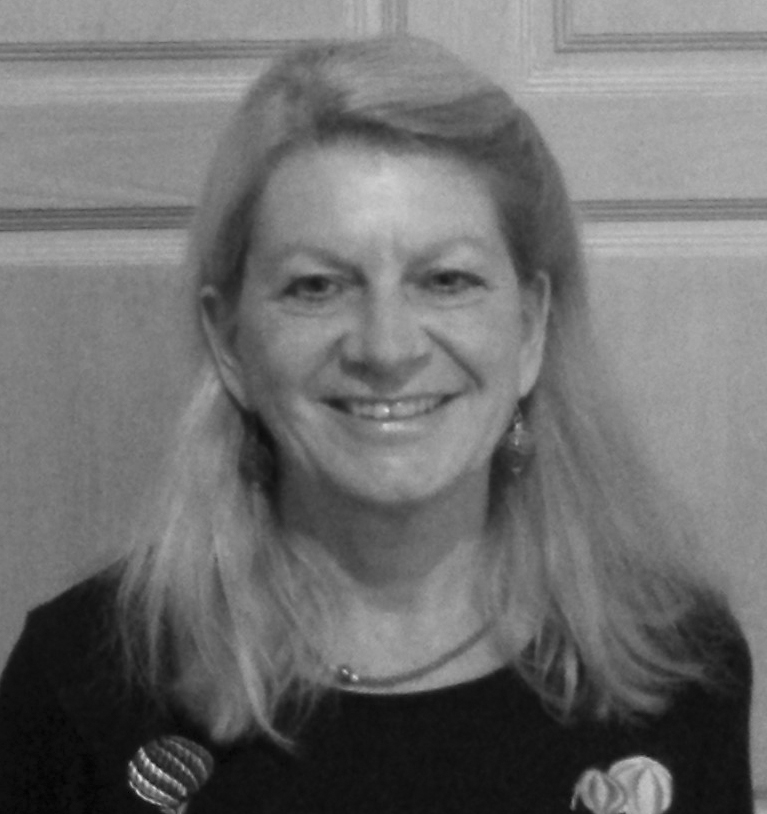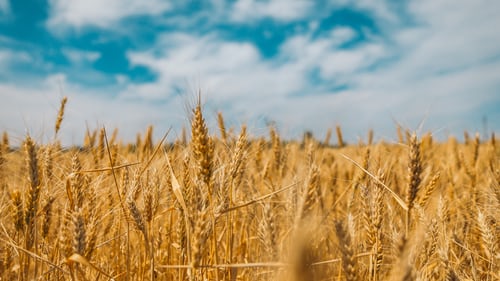3 March 2022
Ukraine
A complex history.
By Lynda Goetz

The invasion of Ukraine by Russia last week came as a shock, but not exactly as a surprise. How we got to this point has been the subject of serious analysis all week. The courage, bravery and resilience of the Ukrainian people and its leaders have impressed around the world. The fact that they have not so far been overwhelmed by the Russian forces is a credit to their organisation, strength and spirit.
As I write this, Kharkiv University has been attacked by Russian missiles. This university is one of the oldest in Eastern Europe and was founded in 1804 under Tsar Alexander I. It was the intellectual centre of Russian-controlled Ukraine until the 1830s when Kyiv University took over this role. Kyiv, the capital of modern-day Ukraine, and the centre of the old Kyivan Rus’, today has a 40-mile convoy of Russian tanks and armoured vehicles bearing down upon it. Over 900,000 Ukrainian refugees have been flooding over the border into neighbouring countries to the West; Moldova, Romania, Hungary, Slovakia and Poland. Poland in particular has taken over half this number of refugees. In contrast to their reaction in 2015, the people of this country have positively welcomed the refugees. This difference has not passed unnoticed and has even caused some to mutter about racism. This is to misunderstand the nature of middle Europe and its history.
The history of Ukraine is complex. As in much of central Europe, borders have not been fixed or permanent. For most of its history it has been fought over and divided between Russia and Poland. The Mongols and Ottoman empires have made incursions. As Neil Tidmarsh outlined in his article in the Shaw Sheet on December 9th, Ukraine: A Brief History, the history of modern Ukraine did not begin until 1917 when the Ukrainian People’s Republic was declared and internationally recognised. Prior to that, the country now being defended against Russia’s invasion had been a divided part of central Europe for centuries.
The trident, the symbol of Ukraine during the struggle for independence in 1917-20 and again since 1992, was first used by Volodymr the Great (980-1015) (or Vladimir) when he minted coins stamped with the symbol. He had consolidated lands acquired by his predecessors; further extended his territories and converted to Byzantine Christianity during his reign. This strengthened the state and was also the start of a powerful church. At its height, the empire known as Kyiv Rus’ was the largest empire in Europe, but internecine warfare after Voldomyr’s death and the difficulties of keeping control of such a large area left it vulnerable to foreign attacks and the Mongol invasion in 1236-40 destroyed the state.
Many have thought that the current-day Vladimir has been looking back to the Soviet Union in his claim to Ukraine. Others have talked about his looking back to Peter the Great as his real hero. Perhaps he is looking even further back. Undoubtedly, the history of the peoples of this region is very interwoven. The Encyclopaedia of Ukraine, to which I have already referred (and to which I would refer anyone interested in this subject), also points out ‘that the issue of the nationality of the inhabitants of the Kyivan state is also a matter of continuing controversy… The discussion was initiated by the Russian historian Mikhail Pogodin, who claimed that the original inhabitants of contemporary Ukraine fled north under pressure from the Mongols, and that they later became the modern Russian nation. The Ukrainians, meanwhile, arrived much later from somewhere in the Carpathian Mountains’….. Mykhailo Hrushevsky sought to demonstrate that Ukrainians were autochthonous in their territories, and that the Principality of Galicia-Volhynia was the successor to the Kyivan state. Hrushevsky’s theories were for the most part adopted by Ukrainian historians and by some others….. Because these theories did not correspond to the political objectives of the Soviet leadership, a panel of historians was commissioned in the 1930s by the Communist Party of the Soviet Union to draw up a new historical schema of Eastern Europe; its basic premise was that Kyivan Rus’ had been founded by a single old-Rus’ nationality, out of which Ukrainians, Russians, and Belarusians developed in the 14th and 15th centuries’. It is perhaps this Soviet version of history to which Vladimir Putin is wedded in his crusade to bring Ukraine back under Russian control.
During the 14th and 15th centuries the influence in Ukraine was from Lithuania and Poland and there were ongoing wars with Muscovy and the Tatars. The 16th C was characterised by the growth of Cossack groups. The word in Ukrainian is kozak and derives from the Turkish kazak meaning free man. These were men who were seeking freedom from authority, or who sought to be in control of their own destiny, and who moved out into the steppes. Many were Ukrainian peasants who were escaping the imposition by Poland of their own culture and Catholicism on the populace. Whilst the Polish government benefited from the defence provided by the Cossack fighters against the Tatars, those same fighters provided at the same time a threat to the nobles and magnates and there were a number of Cossack rebellions and uprisings throughout the 16th and 17th C. From the mid-17th C however, the Cossack-Polish War (1648-1657) led to the establishment of the Hetman State, the Ukrainian Cossack state.
This initially occupied the central part of what we now know as Ukraine, including Kiev. In 1654 with the signing of the Pereiaslav Treaty the Hetman State recognised the Muscovite Tsar, which brought it increasingly again under the influence of Russia. During this time Ukraine became divided into Right-Bank Ukraine and Left-Bank Ukraine, the former under Polish rule, the latter struggling to keep itself free of Russian influence. According to the Internet Encyclopaedia of Ukraine, ‘the Left-Bank lands have commonly been considered the heartland of Ukrainian ethnic territory. The former Left-Bank Ukraine now constitutes Chernihiv oblast and Poltava oblast, the left banks of Kyiv oblast and Cherkasy oblast, the city of Kyiv and its right-bank environs, northern Dnipropetrovsk oblast, and northwestern Sumy oblast. Again, this may add to the historic connection to which Mr Putin alludes in his claims.
Ivan Mazepa, hetman from 1687 to 1709, developed close relations with Peter the Great and maintaining good relations with Moscow was a key part of his policy. With Russia’s blessing he attempted to gain control of Right-Bank Ukraine. This plan failed and thereafter the Russian Empire’s control over Left-Bank Ukraine increased. Peter’s decree of 1720 banned publication of books in Ukrainian and passed other laws which included a prohibition on exporting grain westward. Russia’s grip tightened. This policy of centralisation and institutional ‘russification’ initiated by Peter the Great was continued and completed in the 18th C by Catherine II (the Great). Southern Ukraine was swept aside in Catherine’s drive southward to the Black Sea to gain more access to world trade.
Throughout the remainder of the 18th and 19th centuries, Ukrainian autonomy was effectively non-existent. The rise of Western influence, the intelligentsia and the universities, originally set up to provide well-trained bureaucrats for the rulers in Russia, actually led also to a growth of national consciousness. In the mid-19th century the Cyril and Methodius Brotherhood was founded in Kyiv to promote the idea of nation-building. The Ukrainian poet Taras Shevchenko was part of this movement and he was arrested in 1847 by tsarist police and exiled along with other leaders. He was never allowed to return to Ukraine and died in St Petersburg, where he was buried. However, his remains were transported to Ukraine a few months later and he was reburied in Kaniv, since which time his grave has been an almost holy site for millions of Ukrainians. His writings were, and continue to be, a starting point for Ukrainian literature and the rise of a national identity.
At the same time, in Western Ukraine revolts against the Hapsburgs who now ruled this part of central Europe were part of the revolutionary mood of 1848 and Western Ukrainians (main city Lviv)* began to express themselves as a distinct nation for the first time in modern history. The culmination of these movements and the changing socioeconomic climate at the end of the 19th C led eventually to the declaration of the Ukrainian People’s Republic in 1917. That, of course was only the beginning of yet another chapter in the tortuous history of the country we call modern Ukraine.
The constantly shifting sands of what we now tend to call geopolitics can to a huge degree explain both Putin’s rather extraordinary claim that Ukraine has no right to exist as an independent country and the tenacious heroism of so many of its population. It can probably also explain the different way in which Poland has responded to the current refugee crisis on its border and its reaction to the Syrian migrant crisis in 2015. For both Russia and Poland there is a very long and stormy shared history with Ukraine, even if that history has involved subjugation and empire. How this latest devastating, destructive and distressing twist in the country’s history plays out, only time will tell.
*The modern-day flag is based on the colours of that city’s coat of arms and was first used in 1848. It was eventually adopted as the national flag in 1991. (see also a Brief History of the Ukrainian flag by Tetyana Denford)


